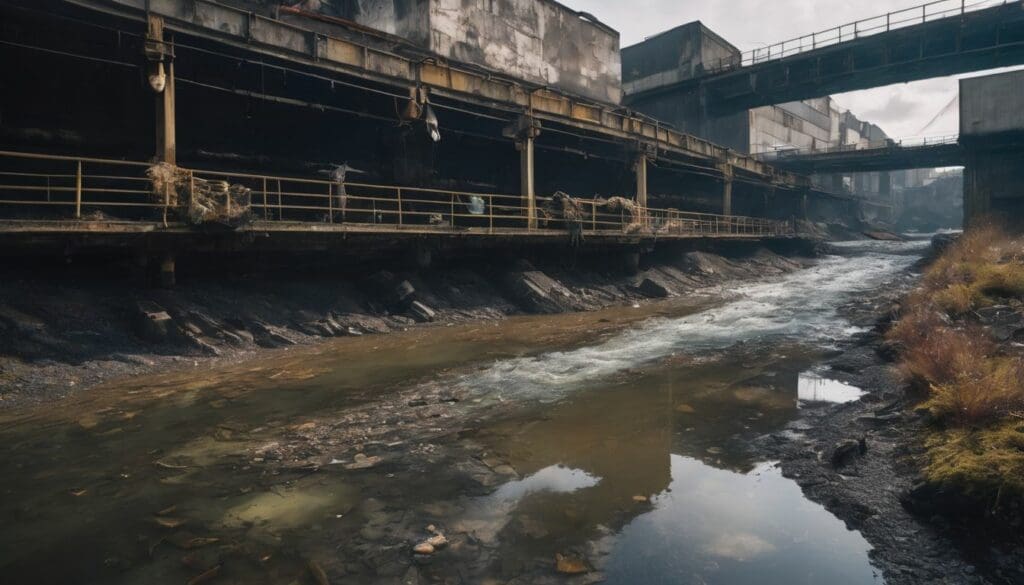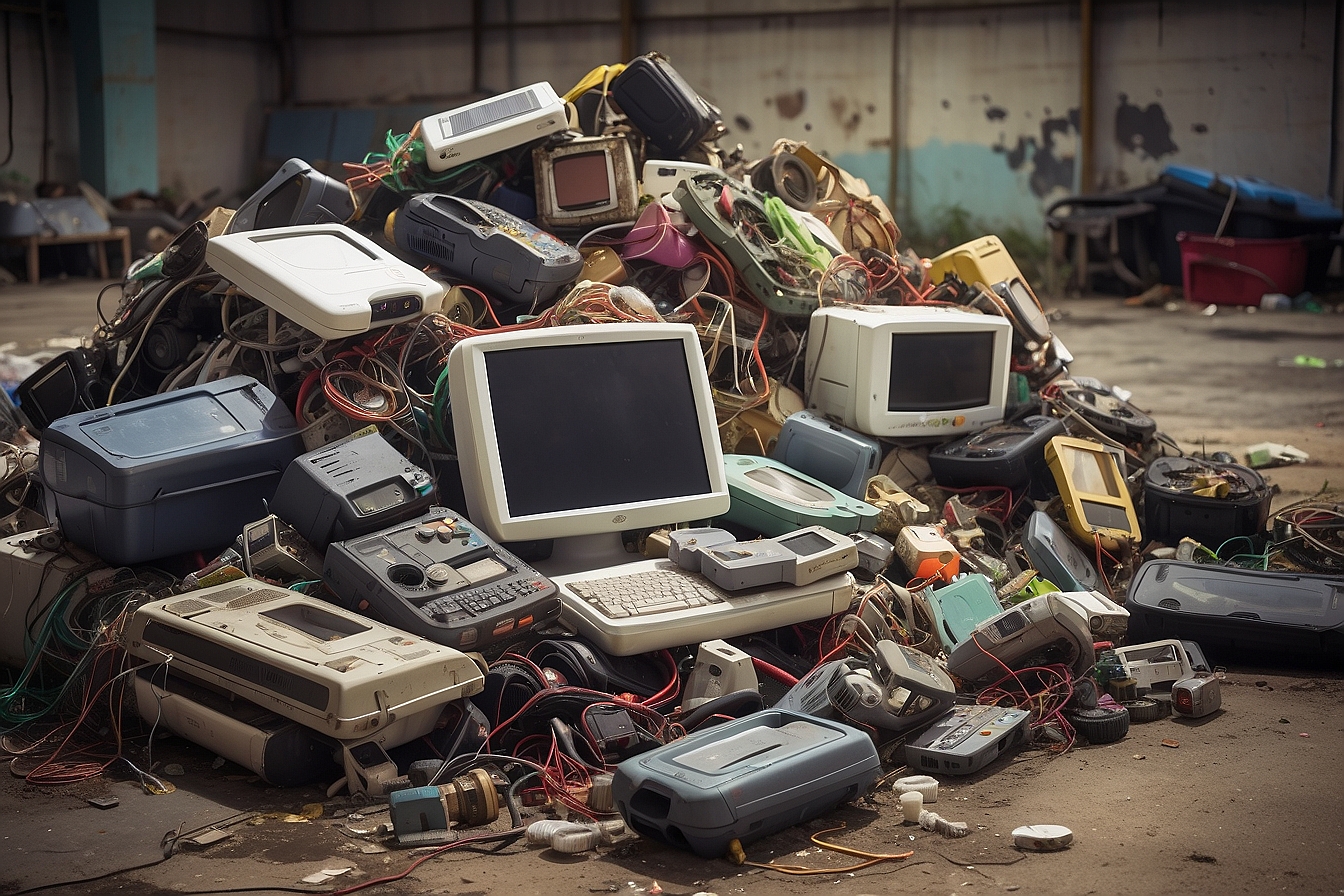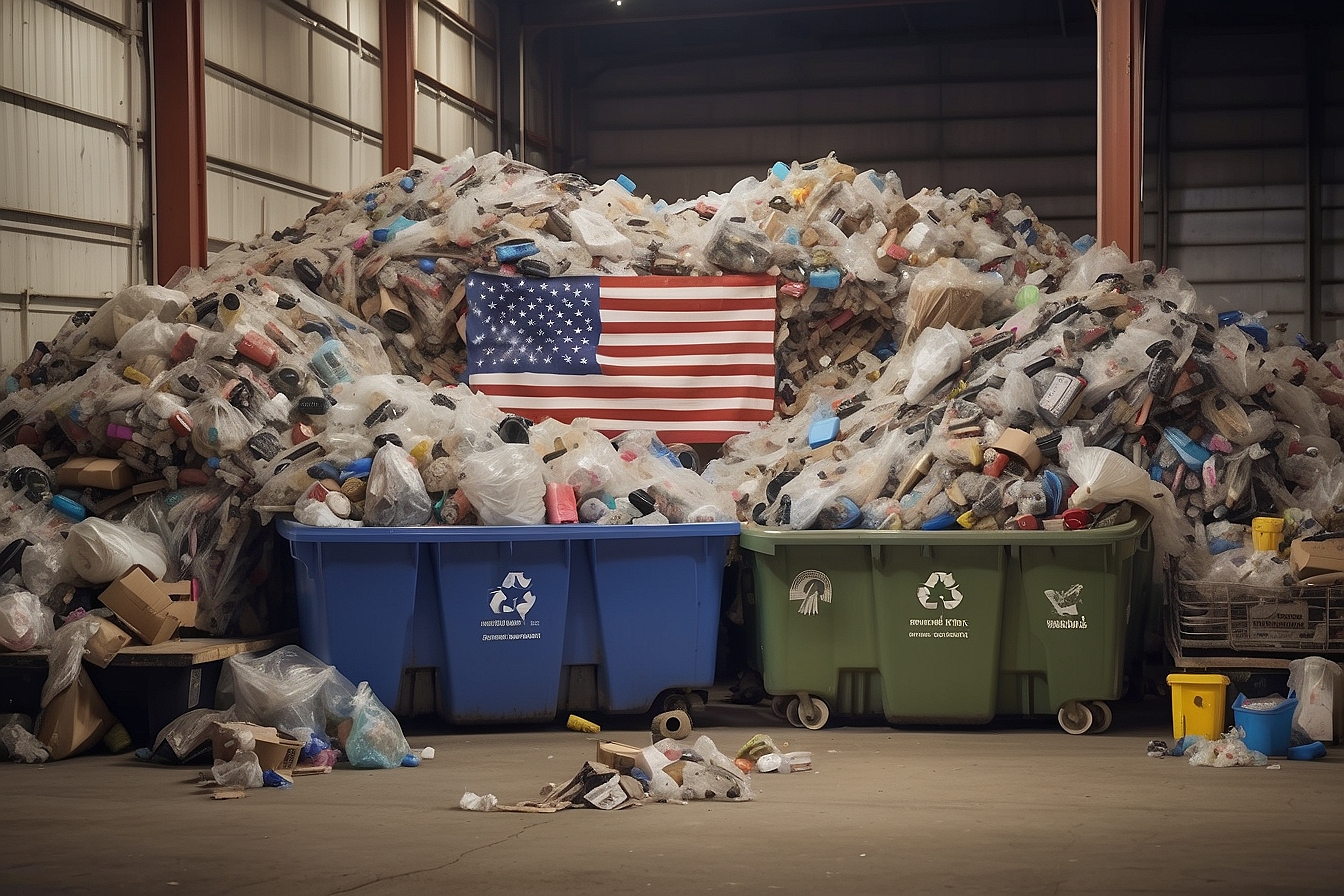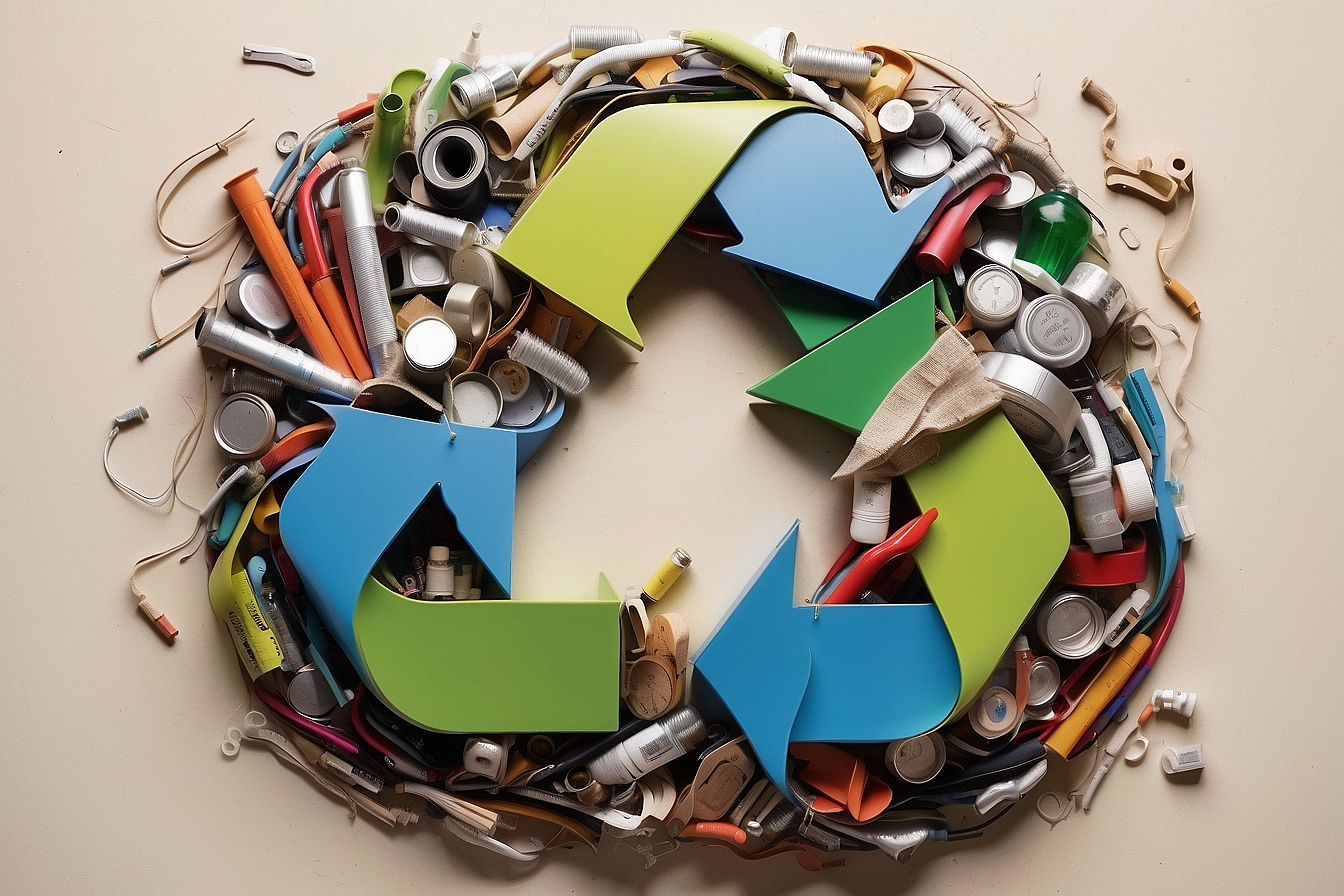Every day, the waters we hold dear face an insidious threat: chemical waste. This concern strikes a chord with all of us who treasure our environment; a staggering 80% of wastewater is reckoned to slip back into our ecosystems without any treatment or recycling.
In our upcoming article, we explore hands-on measures that each one of us can adopt to confront this peril head-on and preserve the vitality of our waterways for those who will inherit them.
Join us as we unpack actionable steps towards turning back the tide on pollution, because it’s only by pulling together that we can truly make waves in protecting what’s ours.
Key Takeaways
- Chemical waste seriously threatens water quality and aquatic life, with toxins from industrial run-off leading to diseases in humans and animals, as well as damaging entire ecosystems.
- Up to 80% of wastewater is released into the environment without treatment, highlighting an urgent need for better pollution control and waste management practices.
- Improper disposal of chemical waste can lead to severe health issues like cancer and reproductive problems due to contaminated drinking water sources.
- Communities offer designated hazardous waste drop – off locations that must be used correctly, along with following strict regulations on chemical disposal to prevent environmental harm.
- By identifying chemicals properly, utilising professional help, and educating others about correct disposal methods, we can significantly diminish the risk of water pollution.
The Hazard of Chemical Waste in Our Waters
Chemical waste in our waters poses a serious threat to aquatic life and water quality. It can lead to health and ecological hazards, impacting the environment and those who rely on clean water sources.
Impact on aquatic life and water quality
We see the devastating effects of chemical waste on aquatic life every day. Toxic chemicals seep into waterways, turning them into death traps for fish, frogs, and other vital species.
These creatures struggle to survive in contaminated environments, often succumbing to the lethal doses of pollutants. Their populations dwindle as their habitats become toxic wastelands.
It’s not just a crisis for biodiversity; it undermines whole ecosystems that rely on healthy aquatic life.
Our actions inadvertently harm water quality as well – a resource we all depend on. Industrial waste and hazardous substances disrupt fragile balances in lakes and rivers, leading to algal blooms that choke out oxygen.
Groundwater contamination also reaches our taps, posing risks to human health while we strive for pollution control. Protecting these irreplaceable water sources is essential not only for nature but also for our own survival; we must act now if we hope to preserve them for future generations.
Health and ecological hazards
Chemical waste in our waters poses significant health and ecological hazards. Human exposure to toxic chemicals from polluted water sources can lead to severe health issues such as cancer, reproductive problems, and developmental abnormalities.
Moreover, the presence of hazardous substances in water bodies can harm aquatic life, disrupting ecosystems and diminishing biodiversity. It is crucial for us to recognise the dire consequences of chemical waste on both human health and the environment.
Furthermore, the discharge of industrial waste into our waters not only contaminates drinking water sources but also results in long-term damage to ecosystems. Toxic chemicals pose a serious threat to marine life by causing mutations, impairing reproductive systems, and even leading to population decline.
How to Properly Dispose of Chemicals to Reduce Water Pollution
To prevent chemical waste from contaminating our waters, it’s crucial to understand how to properly dispose of chemicals. Here are some important steps to take:
- Identify the chemicals: Before disposal, it’s essential to know the nature and classification of the chemicals you are dealing with. This will help determine the appropriate disposal method.
- Follow regulations: Familiarise yourself with local, state, and federal regulations regarding the disposal of hazardous waste. These regulations will outline the proper procedures for handling and disposing of chemical waste.
- Use designated disposal sites: Many communities have designated drop-off locations or collection events for hazardous waste. Take advantage of these resources to ensure that your chemical waste is disposed of properly.
- Proper packaging: When transporting chemical waste to a disposal site, make sure it is securely packaged in leak-proof containers and clearly labelled with its contents.
- Seek professional help: If you are unsure about how to dispose of certain chemicals, seek guidance from environmental agencies or professionals who specialise in hazardous waste management.
- Consider alternative options: Whenever possible, explore alternative methods for reducing or eliminating chemical waste, such as recycling or reusing materials.
- Educate others: Spread awareness about the importance of proper chemical waste disposal within your community and encourage others to adopt responsible practices.
Conclusion
In conclusion, chemical waste in our waters poses a significant threat to aquatic life and water quality. Proper disposal of hazardous chemicals is essential to reduce water pollution and prevent health and ecological hazards.
Take action now to protect our environment from the devastating impact of chemical spills and contamination in our waterways. It’s crucial that we all play a part in pollution control and preventing environmental degradation caused by toxic chemicals in our precious waters.
FAQs
1. What is the main problem with chemical waste in our waters?
Chemical spills and hazardous waste disposal contribute to water pollution, endangering aquatic life and causing ground water contamination.
2. How does chemical waste affect the environment?
The environmental impact of chemical waste leads to serious problems like environmental degradation, impacting both land and marine ecosystems.
3. Can toxic chemicals in water harm people?
Yes, health effects of chemical waste can be significant as contaminants in waterways may end up in drinking water sources, posing risks to human health.
4. What happens to wildlife when there are chemical spills in water?
Aquatic life contamination from toxic chemicals can kill or harm marine species, altering their habitats and food chains.
5. Is anything being done about industrial waste disposal into bodies of water?
Efforts for pollution control are ongoing; governments and organisations work on regulations and safety measures to reduce the environmental pollution caused by improper industrial waste disposal.





